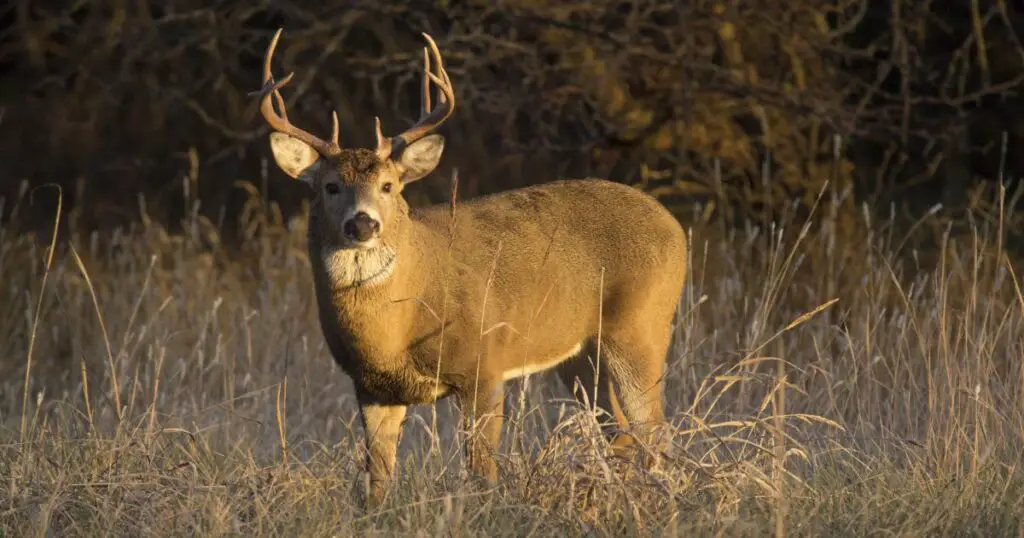As every good deer hunter knows, timing is important. Knowing the times when deer prefer to feed will give you an edge and make a successful hunt more likely. Here is our science-backed guidance for the best times to hunt based on preferred deer feeding times and movement habits.
The most common deer feeding times are dusk and dawn. This is when deer are active and prefer to feed. That is also why those are the best times to hunt for deer. That said, your location and the type of deer you are hunting may impact this.
Understanding what the deer species you’re hunting prefers to eat (and how their diet changes throughout the year), can be key to successful positioning of a blind or tree stand.
Their activity level at different times of the day may be impacted by local factors, like traffic, human activity, and more.
Feeding Times Across Most Deer Species
Deer are crepuscular, meaning they are most active at dawn and dusk. This means that during the day, they often settle into their preferred bedding areas.
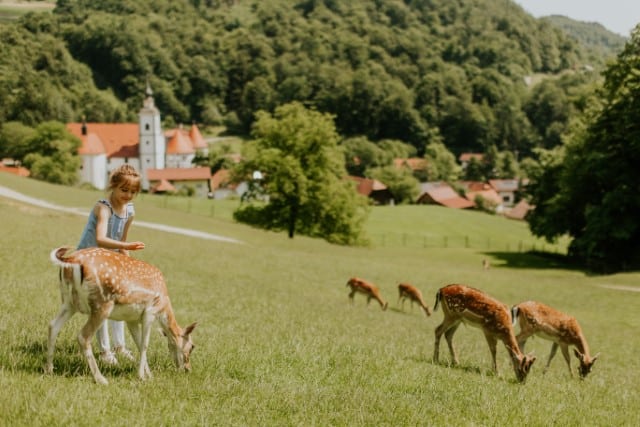
As a hunter, the best times to find deer looking for food and feeding are just before and just after daylight hours.
Early morning is the best time to find deer feeding, usually an hour or two before sunrise. Deer may also feed in the evening, especially in areas with a lot of hunting pressure.
Deer may prefer the evenings because of how the darkness helps conceal them. Also, the cooler temperatures prefer relief.
They may also find that the evening brings fewer disturbances from predators, hunters, or other animals.
While they’re much more likely to be seen at dawn and dusk, you may sometimes also spot deer during the day, depending on the season.
While deer usually sleep during the day, you may find them doing some light foraging around their bedding area.
However, it’s probably best to refrain from taking a shot in these circumstances.
Their position could prevent a clean kill. It’s much better to wait for the deer to move into an open area before taking aim.
Depending on your location, you may find deer are active even a few hours before sunrise as well as a few hours after dusk. This is going to vary depending on how much hunting there is in the area, as well as the feeding patterns of your local deer population.
Deer Feeding Chart
To make it easier to understand common deer feeding times, here is a table summarizing the best times to hunt for these animals. While there are a few factors that can affect the times deer choose to feed, this chart can provide a general idea of when you may find them out.
| Time of Day | Likelihood of Seeing a Deer |
|---|---|
| Before Dawn | Very Likely |
| Dawn | Very Likely |
| Morning | Likely |
| Noon | Not Likely |
| Afternoon | Not Likely |
| Dusk | Likely |
| After Dusk | Very Likely |
Remember that seasons and locations can affect deer activity and alter these feeding times. For example, in colder seasons and locations, the animals may be more active during the day.
However, generally speaking, deer are most active in looking for food and eating up to 2 hours before dawn or after dusk.
Refer to this table as a reference when figuring out when you’re most likely to spot that trophy buck on your hunt.
Learning about how certain factors affect deer hunting times is going to give you an advantage and help prevent the disappointment of going on a hunt without finding any deer worthy of your tag.
What Factors Affect Deer Feeding Times?
Deer are prey animals which means they must limit their exposure to predators. As such, the time of day deer will feed depends on a number of factors, including the density and activity of predators, the season, and the size of the local deer population.
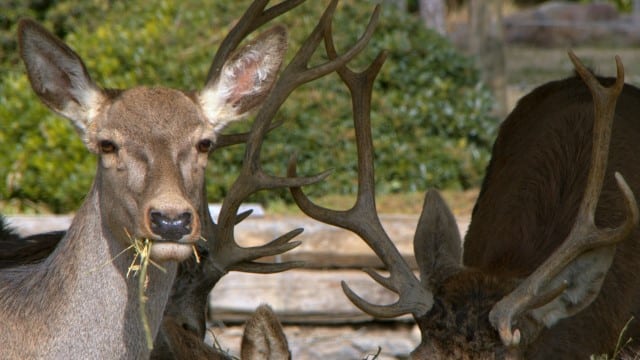
In areas with a high density of predators like coyotes, wolves, or bears, deer may limit their activity to the morning and evening hours when predators are less active.
This limiting of activity is more severe if the population of predators is higher, and it is less severe when the predators are scarce.
Light plays a huge factor as well as brightness provides a disadvantage to the deer. In areas with bright morning or evening skies, deer may feed at night when it is darker to help conceal them from predators.
Here are some other factors to take into consideration to factor into your feeding times to lure deer.
How Does The Rut Affect Feeding Times?
The rut is a period of time in the year in which deer are actively breeding.
During this annual mating season (which typically occurs in the fall and may continue into the winter months), male deer are focused on one thing, and it isn’t food.
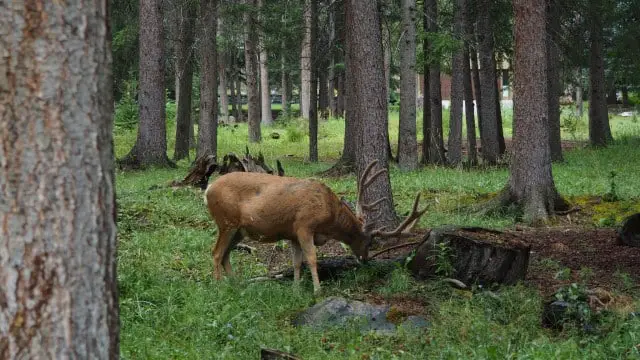
Getting a trophy buck during the rut is a lot easier than at other times, as they respond better to rattling and deer calls. Also, they can be found wandering around more often than they feed.
With bucks being slightly more active in the daytime during the rut, you may be able to draw them out easier with feed.
While the rut is only a limited time in the year, it can affect feeding times due to the increased activity of bucks.
Bucks may also be more aggressive during the rut and will wander from doe to doe looking for a mate, making them a more active target.
What Effect Does Temperature Have On Feeding Times?
The temperature has a big effect on deer activity and feeding behavior, especially during the colder months.
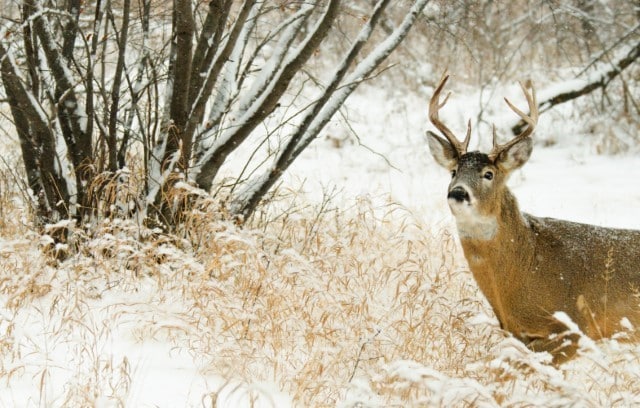
During these months, deer require more calories to survive and will feed more frequently than during the warmer months.
In warmer months, deer can become dehydrated more easily, and they will be less active. Increased humidity results in a higher body temperature during the hottest periods of the day and can decrease the overall activity of deer.
When it’s warmer weather, the best time to find deer is definitely going to be before dawn or after dusk.
In cooler weather, deer may be found a bit later into the morning as a result of a combination of the rut and the need to forage more for food during colder months.
How Do Seasons Affect Deer Feeding Activity?
Seasons have a huge effect on how many deer you will find, not only because of the way seasons affect temperature but also because of the way they affect food sources.
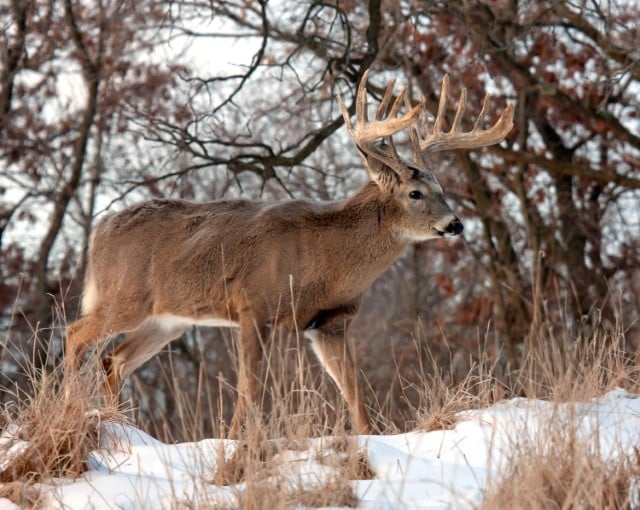
During the warmer seasons, deer will have access to much more food and don’t have to expend so much energy finding their forage. That is why they can afford to spend more of their day resting during those times of the year.
The opposite is true in the winter. Snow cover can make food very scarce. The animals will need to be awake more and work harder to get their daily calorie intake.
That is why during the cold weather, you may be more likely to find more deer active and moving around during the day. They will be searching for food.
Another reason deer may be more active in the winter is because they’re less likely to overheat.
Also, bucks get a lot of extra energy from the rut. They often sleep a lot less in the winter during the day.
Fall is the most common season to find deer. This is the season when they’re eating more as a result of the rut and are preparing for the winter food shortage.
If you live in a part of the United States that gets heavy winter snow, there will be much more deer activity leading up to the snow cover.
So, your location is a huge factor in determining whether there will be variation in activity different from the table we provided here.
How Do Moon Phases Affect Deer Feeding Times?
Moon changes don’t have significant evidence that proves the cycle affects deer activity. A lot of animals (especially fish) are sensitive to lunar cycles, but deer are minimally affected.
However, moonlight variations are the most likely factor that may affect deer movements.
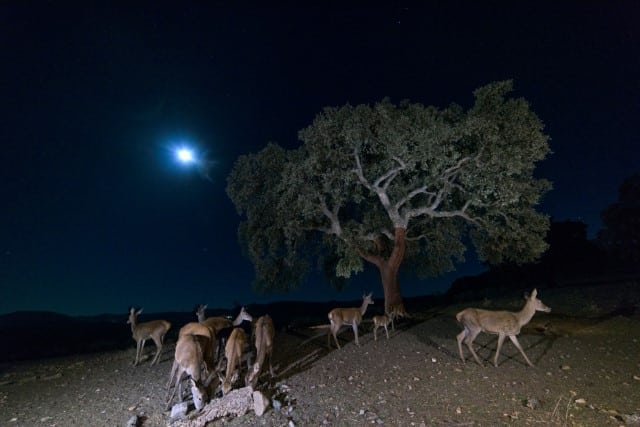
Moonlight is often a factor in when deer feed. It can provide an advantage for predators who are out hunting at night.
Deer are often more active after a new moon when there is less light for predators. During this time, they can feed more without worrying as much about being seen.
Deer have poor eyesight and rely on their sense of smell to find food.
However, the light from a new moon will mean that deer won’t be affected by darkness and can avoid predators with less difficulty.
As you can see here, there are many factors that affect deer feeding times. It’s best to be prepared and chose the times that work for you.
It’s tricky to find a trophy buck, but with the right knowledge about deer activity, you get to have an advantage.
How To Use Timed Deer Feeders To Your Advantage
You can give your hunting a boost during the off-season and prior to the rut by using timed feeders.
Deer feeders use timers that can be set to provide feed at predetermined times, usually in the morning and evening.
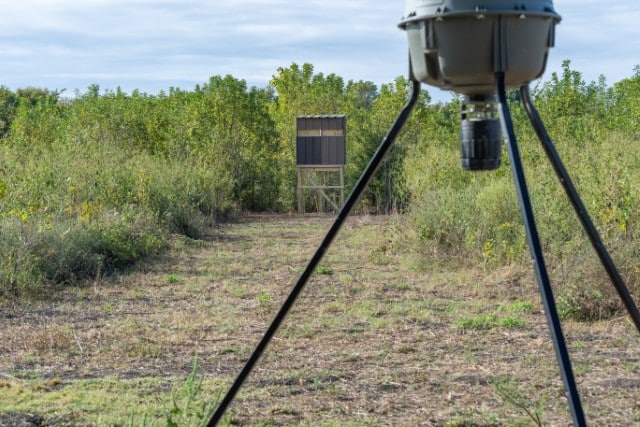
This will draw deer to your hunting area and give you more chances of spotting them while they are feeding. You can also use timed deer feeders to draw deer closer to your hunting area by setting it to provide feed at a time when they are usually less active.
By providing feed at different times, you can help to change the times and locations in which deer are active in order to gain an advantage for your hunt. Drawing deer into one location can also help make deer calls and other tools and methods more effective.
Deer calls are a great tool to use if you’ve drawn in deer with feed and are confident you know their general area of activity.
To draw in bucks, you can simulate the sound of buck antlers clashing with a fake of salvaged pair of antlers. They will think that there is a female that other bucks are competing over.
Use Trail Cams
You may also want to use trail cams to scope out the activity in your area. These cams can help you determine which times of day deer are more active, including the timing of their feeding. That way, you can adjust your feeders accordingly.
Trail cams can also help you better understand when to start hunting by using sightings prior to the hunting season to determine location. In combination with timed deer feeders, you can gain a great advantage in your hunt and have the potential to find trophy bucks.
Automatic feeders will cost additional money. However, they can be a great way to increase your chances of bagging the deer you want, and they can end up paying off after a few successful hunts.
RELATED: What’s the Best Food Plot for Deer?
What To Do If You Aren’t Having Any Luck
If you’ve tried all of the above techniques and still aren’t having any luck, it may be time to change up your tactics.
In some cases, deer can become wary of hunting locations, and this may require you to change the areas you visit and look in a different spot.

If you have been using the same location for some time, deer may have become aware of you and will be less likely to come out while you hunt.
Time of year may also affect your success rate. If it’s close to the start of hunting season and you haven’t seen any deer, it may be a good idea to wait and try closer to the rut when deer are more active.
It can also be a huge advantage to change the feed that you use. The deer may simply not be interested in what you’ve put out for them.
Changing the feed you use can be a great strategy. It’s possible that deer simply aren’t interested in what you’ve been offering.
If changing the timing of your feeding hasn’t helped you find any extra deer, switch the food that you offer.
Final Thoughts: Deer Feeding Times
The time of day, location, temperature, and season are huge factors that impact deer activity.
You’ll find as you gain more experience in deer hunting, you will get better at troubleshooting problems. Persistence is what will eventually get you that trophy buck.

